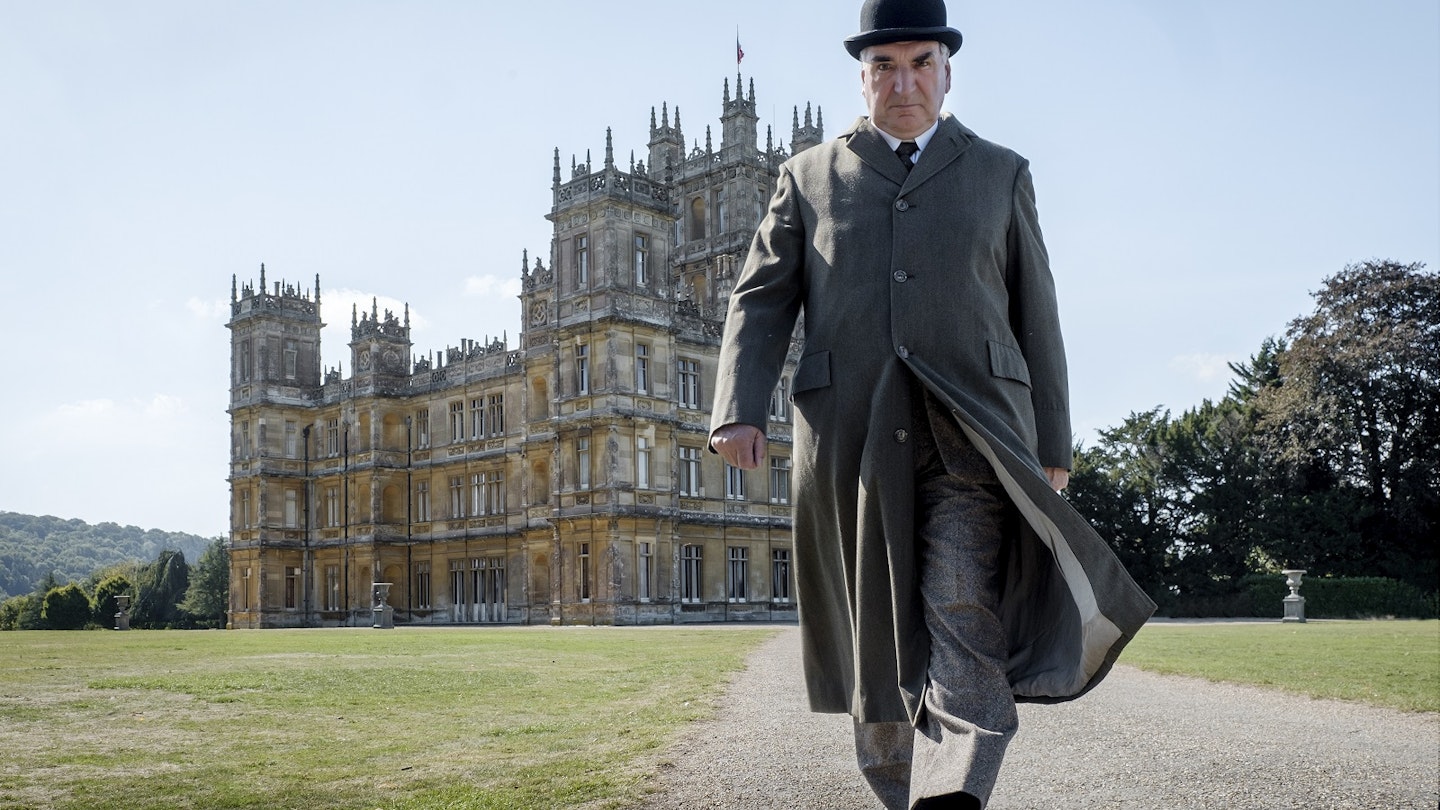Explore Iconic Filming Locations from Downton Abbey
‘A royal luncheon, a parade, and a dinner?’ says Mrs Patmore, quite perturbed. The trailer for the new Downton Abbey movie outlines the challenges ahead for the aristocratic Crawleys and their servants, as the king, queen and their royal entourage descend on the grand house. The award-winning Downton Abbey TV series, set in the period of 1912 to 1925, sparked the imaginations of travellers everywhere wanting to experience Earl and Countess of Grantham-levels of luxury. With the upcoming release of the movie (in UK cinemas on 13 September), here’s our guide to the filming locations that you can actually visit.
Highclere Castle (Downton Abbey itself)
Highclere Castle, the filming location for Downton Abbey itself, is set in the beautiful English countryside between Bath and London. It’s home to the real-life Earl and Countess of Carnarvon, who open the castle and gardens for themed tours, afternoon teas, and events throughout the year. The Christmas ball is a particularly decadent affair. Tickets can be pre-purchased online, with a limited number of tour tickets available for sale on the day. Therefore, check the online schedule in advance to make the most of your visit.
For those intrigued by ancient Egypt, the Egyptian Exhibition in the cellars showcases artefacts from Tutankhamen’s tomb—a discovery funded by the 5th Earl of Carnarvon.
Bampton, Oxfordshire and Lacock, Wiltshire (the town of Downton)
Parts of the village of Bampton in Oxfordshire and National Trust-owned Lacock in Wiltshire are utilized for external scenes in the movie, contributing to the charming village of Downton. In Bampton, you can explore the village green, visit the Post Office, or take a stroll through the village churchyard. In Lacock, keep an eye out for the exterior of the cottage that serves as the Grantham Arms.
Buckingham Palace, London
The exterior of London’s iconic Buckingham Palace is depicted in the film as the residence of King George V and Queen Mary. While currently serving as the main home of Queen Elizabeth II, parts of the State Rooms are open to the public when Her Majesty is on summer holidays, and select days during winter and spring. Expect to see exquisite furniture, elaborate decor, and treasured artworks from the Royal Collection despite no actual filming occurring inside Buckingham Palace. Instead, interior scenes were captured at Wrotham Park in Hertfordshire (which is closed to the public) and Wentworth Woodhouse in Rotherham.
For visitors content to view only the exterior of Buckingham Palace, consider timing your visit with the free Changing of the Guard Ceremony, where the Old Guard, accompanied by music from military bands, ceremoniously hands over guarding responsibilities to the New Guard.
Harewood House, Yorkshire
Harewood House in Yorkshire, an 18th-century wonder, serves as the real-life location reflected in the movie. The stunning house boasts an impressive fine art collection open to the public year-round. Visitors can tour the State Rooms, including the drawing room where scenes from the Downton movie were filmed, and explore the large stone kitchen that provides insight into the workings of a busy household. Furthermore, the grounds encompass over 100 acres of landscaped gardens, a lake, and a kids’ adventure playground while hosting various events such as open-air cinema showcases and workshops.
Wentworth Woodhouse, Rotherham
The ballroom at Wentworth Woodhouse portrays the ballroom at Harewood House in the film and also stands in for Buckingham Palace’s interiors. Patrons can take a one-hour guided tour of the formal rooms or explore the private spaces to learn about the aristocratic families who once lived there. The estate features stunning grounds with monuments, lakes, and a deer park, with garden tours available from March through September.
Beamish Museum, County Durham
Scenes filmed at the open-air Beamish Museum feature Mr Bakewell’s shop and York Car Showroom, offering insight into industrial life in the northeast during the 19th and 20th centuries. Visitors can explore various attractions, including a bank, shops, homes, and a pub reflective of an Edwardian town, while enjoying a steam train ride or engaging with a colliery community.





